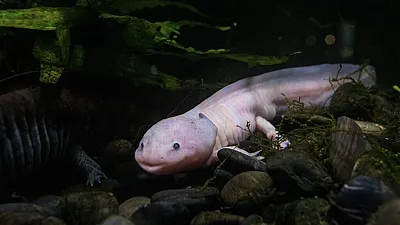To Save a Species, Mexico Aims to AdoptAxolotl
December 4, 2023

Looking at their grinlike expressions, their lion’s mane of gills, and their tadpole-like bodies, it’s easy to see why axolotls are so popular. Yet, despite their appearance as toys and in children’s picture books, the salamander subspecies is under threat. That’s where Mexico’s AdoptAxolotl campaign aims to make an impact.
Ecologists from Mexico’s National Autonomous University launched the program in late November. AdoptAxolotl allows donors to give any amount from 600 pesos ($35) up. In return, donors get a (virtual) connection with an axolotl of their very own. The little amphibian will remain in Mexico City’s captive breeding program. But donors get to name their axy, get updates on its health, and even buy it dinner from time to time.
Scientists say efforts like AdoptAxolotl are essential in stemming the species’ loss. Almost all of Mexico’s 18 varieties of axolotl are critically endangered. It’s estimated that their population density has plunged 99.5% in the last two decades.
“What I know is that we have to work urgently,” Alejandro Calzada told The Associated Press. He is an ecologist with Mexico’s environment department.
The AdoptAxolotl campaign will use funds for breeding programs. It will also expand the scope of wildlife censuses in Mexico and combat the main threats to axolotls. Those main threats are water pollution, chytrid fungus (a skin-eating disease that affects amphibians), and invasive rainbow trout, which displace axolotls and eat their food supply.
Scientists have good reason to preserve axolotls — they are one of nature’s most adept regenerators, and experts believe their biology may hold clues for helping humans heal and ward off diseases like cancer.
Photo from Unsplash courtesy of Mattias Banguese.
Reflect: What role can individuals play in helping to protect endangered species and their habitats?





